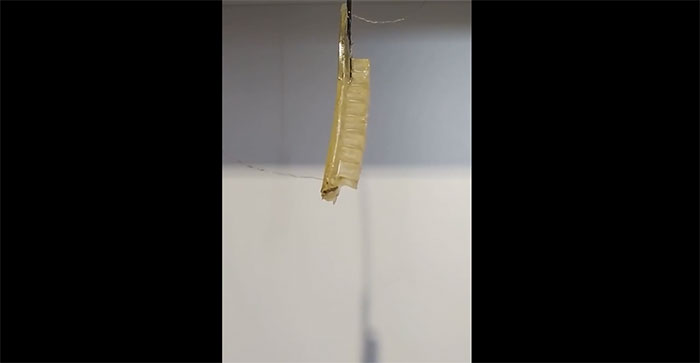Instead of needing to be heated, the new self-healing material can repair itself at room temperature and continue to function without human intervention.
The affordable material developed by a team of experts at the University of Cambridge can self-heal at room temperature. (Video: University of Cambridge).
A team of experts at the University of Cambridge, UK, has developed a 3D-printed self-healing material that is biodegradable and can sense tension, temperature, and humidity, as reported by Phys on February 18. The new research was published in the journal NPG Asia Materials.
This soft sensor technology could revolutionize robotics, haptic interfaces, wearable electronics, and many other applications. However, most soft sensor technologies are not durable and consume a lot of energy.
Expert David Hardman from the Department of Engineering at the University of Cambridge and his colleagues have developed a new self-healing material that can be used for prosthetics and soft robotics. This material can detect damage, take necessary steps to temporarily heal itself, and continue to operate without human intervention.
“We have been researching self-healing materials for several years. However, now we are looking for quicker and cheaper methods to create self-healing robots,” said Dr. Thomas George-Thuruthel from the Department of Engineering at the University of Cambridge, a co-author of the study.

Older versions of robots needed to be heated to heal, but the research team is developing new materials that can self-heal at room temperature, making them more practical for real-world applications.
“We started with a low-cost gelatin-based elastic material that is biodegradable and biocompatible. We conducted various experiments to integrate sensors into the material by adding conductive components,” Hardman explained.
The research team found that sensors containing sodium chloride instead of carbon ink helped create materials with desired properties. The salt can dissolve in water-filled hydrogel, providing a favorable pathway for ion conduction or ion movement. When measuring the resistance of the 3D-printed materials, the scientists discovered that changes in tension led to a chain reaction that could be used to calculate the material’s deformation. The addition of salt also made the material more elastic.
These self-healing materials are affordable and easy to manufacture, requiring only 3D printing or molding. They are highly durable and stable over time, made from safe, common substances. “This is truly a great material in terms of being cheap and easy to manufacture. We can create a robot entirely from gelatin and print sensors wherever necessary,” George-Thuruthel stated.


















































